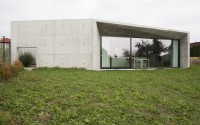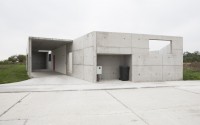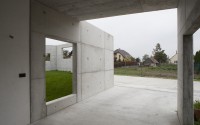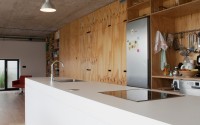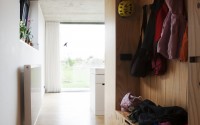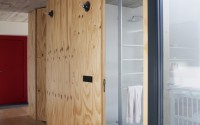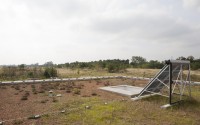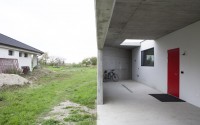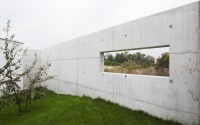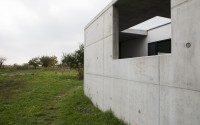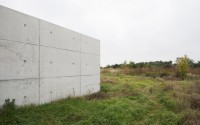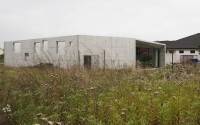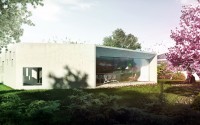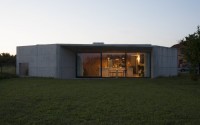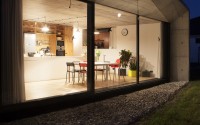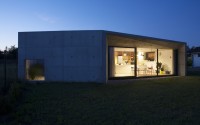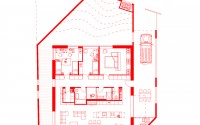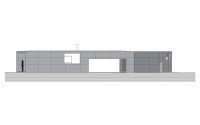House LJM by N/A Bradnansky Halada
This concrete single-storey residence situated in Miloslavov, Slovakia, was designed in 2015 by N/A Bradnansky Halada.










Description by N/A Bradnansky Halada
The LJM House is an architectural project three ideas, the idea of a simple building, the idea of an ideal villa and the idea of the suburban landscape.
The idea of a simple building is the client’s input. The fast construction and the low budget major challenges, as we wanted to provide the client with a variety of spatial situations and a fast transition from a tiny apartment to their new residential environment.The client’s wish of building process simplicity was adopted and represented by the standard-built bungalow type, combined with an additional custom-built spatial layer.
This add-on wrapper with diversified environments extends and enriches the spatiality and liveability of the single story square.Through this device, the project produces an enclosure where architecture, in the meaning of an uncommon formal, scalar, visual and programmatic organization of relationships, can happen without the pragmatic restrictions of construction details, insulation etc.
The idea of an ideal villa enters as an architect’s input to inform the project with principles and strategies that are present in architecture across time. We used the iconic villa Rotonda by Palladio as reference point not only for its nine-square floor plan but mainly for its relationships with the surrounding landscape of the Veneto: four identical loggias are used as architectural tools framing vistas of four different environments; the loggias extend the interior into the outer envelope of the villa.
The LJM house uses this reference to produce an uneasy relationship with its surrounding landscape of fallow plots one side and colourful suburban houses on the other. The reused vocabulary of antique porticos used by Palladio as loggias oriented into an interesting countryside, is further hybridised by a local phenomenon of concrete fence walls “defending” the privacy of the suburban plots and reprogrammed to correlate with contemporary activities.
Rather than framing views or making a portico into a natural environment, the loggias become anartificial spatial environment through hybridisation with the wall: in one instance a loggia, in another a sloped green garden, then a rocky brise soleil, or a veranda carport. Sometimes covered but extroverted, sometimes without roof but secluded, but always a concrete wall.
The idea of the suburban landscape enters the project through the wall, its formal articulation and its performance. The wall is a critical transformation of surrounding ways to ensure privacy. Before suburbanization the rural setting did not operate through radical cuts between private and common. The spaces around the house where meant for activities belonging both to the family and to the community, and served as gradient thresholds. Only later were the varied outdoor spaces – the productive gardens and orchards, the front garden or the yard reduced to mowed lawns and hardscaped parking spaces.
By adding a new layer of architecture to the family house, the project attempts to recreate the spatial richness of the rural residential environment that is private and common, outdoor and indoor, extrovert and introvert.
The house LJM is a house and a wall, and a diversity that happens in-between.
- by Matt Watts